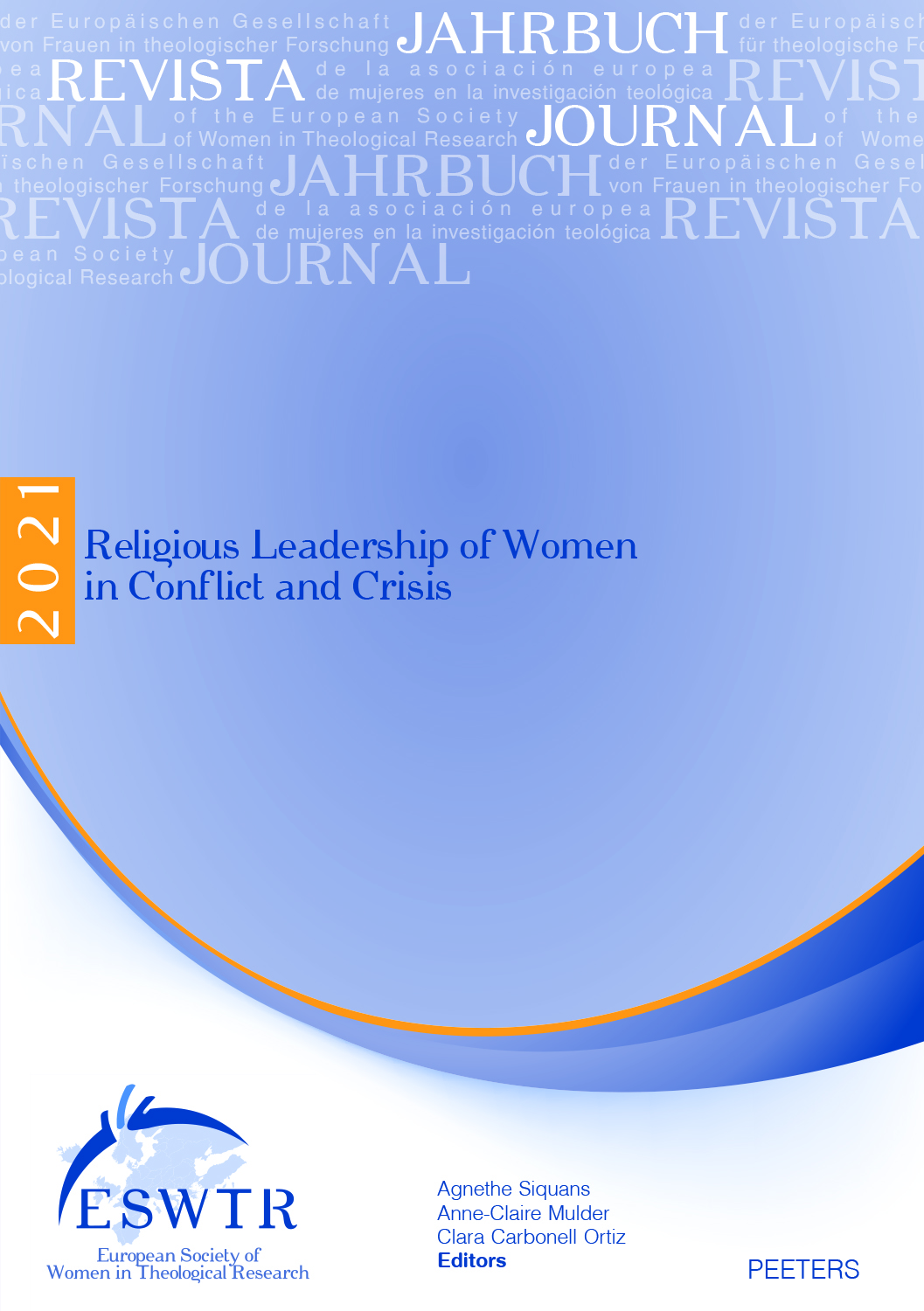 previous article in this issue previous article in this issue | next article in this issue  |

Preview first page |
Document Details : Title: Kirche jenseits von Geschlecht Subtitle: Ein Plädoyer für die ansatzhafte Darstellung des Heilsbilds '... nicht männlich und weiblich' in der empirischen Gestalt der römisch-katholischen Kirche Author(s): RITTER-GREPL, Angelika Journal: Journal of the European Society of Women in Theological Research Volume: 18 Date: 2010 Pages: 157-172 DOI: 10.2143/ESWTR.18.0.2056277 Abstract : An analysis of pastoral professions based on the gender construction theory of the sociologist Angelika Wetterer demonstrates convincingly that the Roman Catholic Church as an institution participates in gender construction. The gender-related hierarchy of the church institution with its distribution of responsibilities in the ecclesiastical professions seems to be the institution’s way of reproducing what is apparently the natural system of two genders in the cultural realm. The division of labour between the clergy and lay people, as well as the intra-professional division of labour within the lay professions, are structured and specialised along the dividing line of gender difference with the attributions and sexual stereotypes related thereto. This professional construct operates simultaneously as a gender construction as well. If one confronts the church’s practice with the conception of the church as the initial expression of the kingdom of God, expressed concretely in the oldest baptismal formula of Gal. 3:27-28, it becomes obvious that the social categories found there of class (free/slave), ethnicity (Jewish/Greek) and gender (female/male) are still of significance in various forms in our time. Gender is used particularly as a generative pattern for establishing social order. Therefore the predominant gender order is an obstacle to making the saving image '… neither male nor female' a reality today. The division of labour in the pastoral professions makes gender distinctions and is based on gender constructs. The introduction of the gender perspective and the integration of feminist (epistemological) theories into doing theology and into the professional activities of the church can, however, open up new options for working for gender justice in the church. Si analizamos las profesiones pastorales con ayuda de la teoría de la construcción de géneros de la socióloga Angelika Wetterer, podremos comprobar de forma contundente que la Iglesia Católica Romana participa como institución en la construcción de géneros. La jerarquía de la iglesia sexualizada institucionalmente hace que a través de la división del trabajo en las profesiones pastorales se siga reproduciendo institucionalmente el sistema aparentemente natural de la división cultural en dos sexos. La división del trabajo entre el clero y los/as laicos/as, pero también la división del trabajo existente dentro de cada profesión laica se basa en la diferenciación por género y en lo que ello conlleva de atribuciones y estereotipos de género. La construcción de profesiones es a la vez construcción de géneros. Si comparamos las prácticas de la iglesia con la idea de la iglesia como expresión inicial del reino de Dios, cuya concreción la encontramos en la fórmula bautismal más antigua en Gal 3:27-28, vemos que las categorías que allí se mencionan, o sea, clase social (libre/esclavo), etnicidad (judío/griego) y sexo (femenino/masculino) siguen siendo más o menos válidas en el presente. Sobre todo el género se emplea como patrón generador del sistema social. Con ello, la división de género actual es un obstáculo a la hora de querer tener presente la imagen de la salvación: '… ni masculina ni femenina'. La división del trabajo en las profesiones pastorales hace la diferencia de género y construye género. Sin embargo, al tener en cuenta la perspectiva de género y al integrar teorías (epistemológicas) feministas en la teología y en las profesiones de la iglesia, se nos ofrecen nuevas posibilidades de crear justicia de género en la iglesia. |
 |


